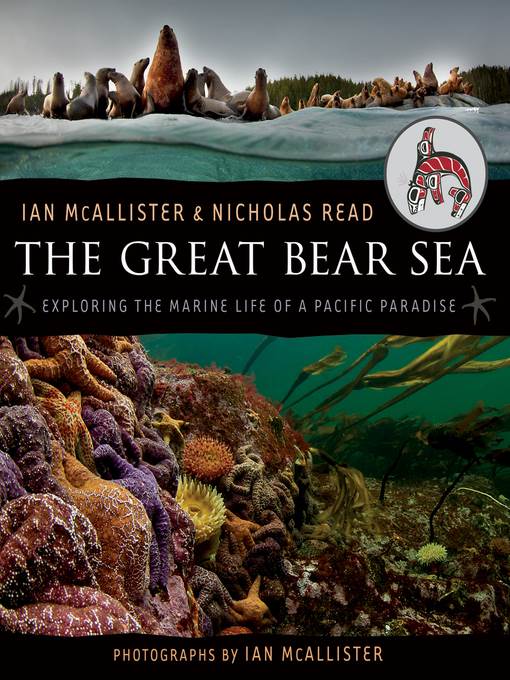
The Great Bear Sea
Exploring the Marine Life of a Pacific Paradise
فرمت کتاب
ebook
تاریخ انتشار
2013
Lexile Score
1140
Reading Level
8-9
نویسنده
Nicholas Readناشر
Orca Book Publishersشابک
9781459805217
کتاب های مرتبط
- اطلاعات
- نقد و بررسی
- دیدگاه کاربران
نقد و بررسی

August 15, 2013
"[W]ithout a Great Bear Sea to feed and nurture it, there would be no Great Bear Rainforest." Third in a series of explorations of the coastal wilderness where the author/photographer lives and works in British Columbia, this title focuses on the creatures of the water surrounding and supporting that temperate rain forest. Chapter by chapter, the authors build up the web of life in this area, from microscopic plankton to the orcas they call "wolves of the sea." Spawning salmon aren't only food for wolves and bears, their carcasses decompose on the forest floor and nourish the trees. In the shallow waters of the intertidal zone, large animals (and humans) find shellfish and more. Sea otters clown in the kelp beds; seals and sea lions dine on the fish. Dolphins and porpoises dance offshore, and whales feed there in the warmer seasons. Every spread includes at least one of McAllister's striking photographs. Sidebars called "Maritime Morsels" add explanations that supplement the lengthy, informative text. Chapters are headed with a stylized salmon image by Martin Campbell, a local Heiltsuk artist. As much an invitation to readers to visit this unspoiled area as a description of its wonders, this is a commendable complement to The Sea Wolves and The Salmon Bears (both 2010). (bibliography, index) (Nonfiction. 9-14)
COPYRIGHT(2013) Kirkus Reviews, ALL RIGHTS RESERVED.

October 1, 2013
Gr 6 Up-The Great Bear Sea, a name used by some conservationists, is that region of the Pacific Ocean running along the vast area of British Columbia known as the Great Bear Rain Forest. This book's subtitle seems both apt and a bit ironic. There's rich, interdependent life here, but there's also trouble in paradise for many threatened species. The nine chapters of chatty text describe the characteristics, survival issues, and relationships of various ocean- and estuary-dwelling creatures. Plankton, salmon, shrimp, crabs, sea otters, seals, whales, and many others are part of the great web that is discusssed. Undersea plants and many birds and land animals that feed on water species and their eggs and young are also included. The captioned, large and small color photographs, sometimes magnified or color enhanced, vary in quality. Some are striking, others ordinary or even confusing. Some readers may wish for pictures of the less-familiar animals. Bits of topical text titled "Maritime Morsels" appear in small columns of varied color on each spread. Like the photographs, these vary in relevance to the neighboring discussion. This region is quite near the United States, and the ecological emphasis is timely and worthwhile. However, the wordy text becomes repetitive in making its point. Patient nonfiction readers are the likely audience. The brief suggestions for further reading include two rather dated titles and three other books by McAllister and Read.-Margaret Bush, Simmons College, Boston
Copyright 2013 School Library Journal, LLC Used with permission.

September 15, 2013
Grades 5-8 Continuing a series of introductions to the animals of British Columbia's Great Bear Rainforest, Read and conservationist McAllister moves just offshore to present associated sea lifefrom plankton and sea stars to salmon, sea otters, orcas, and whales. The text is loosely organized by creature and quite informative, describing each creature's habitat, physical characteristics, and behavior. Generous quantities of excellent nature photos include engaging close-ups of otter and seal faces, dramatic shots of humpback whales and other finny mammals breaching, and particularly dazzling close-ups of sea stars and other residents of intertidal zones. Along with plenty of eye candy, though, the whole notion that a rainforest ecosystem doesn't stop at the shoreline makes this particularly valuable for students of ecology and environmental conservation. A handsome, well-designed introduction.(Reprinted with permission of Booklist, copyright 2013, American Library Association.)

























دیدگاه کاربران